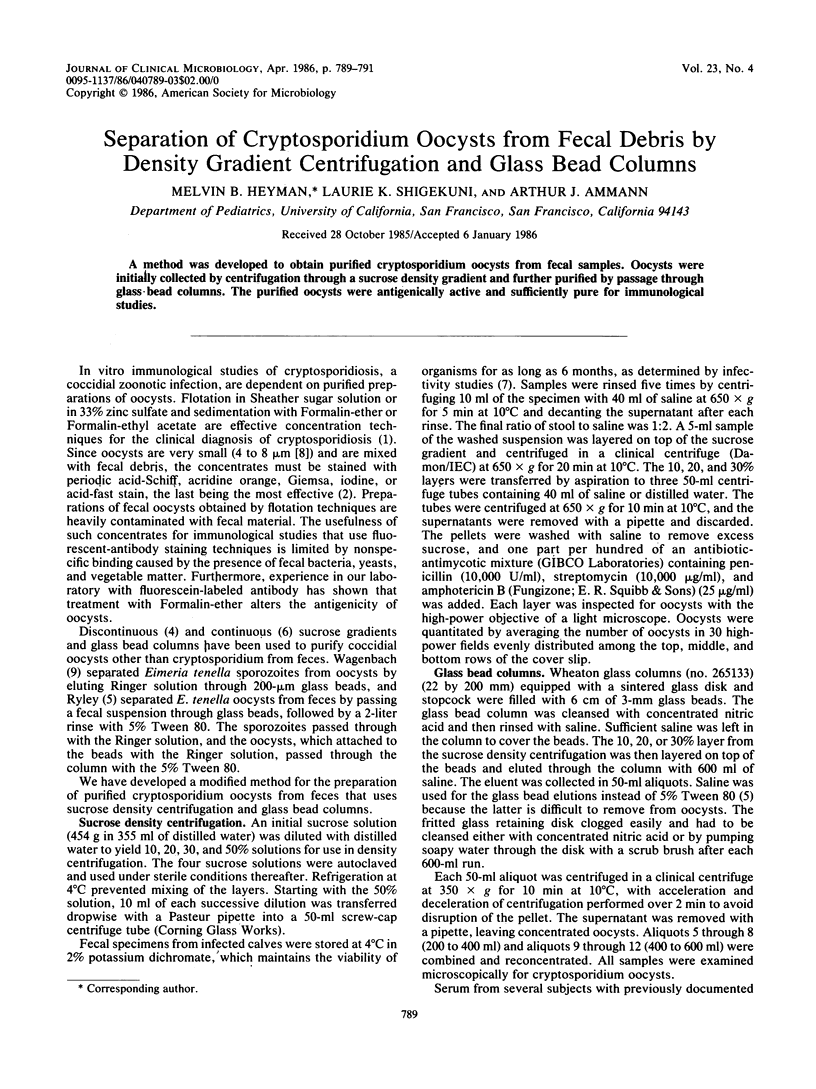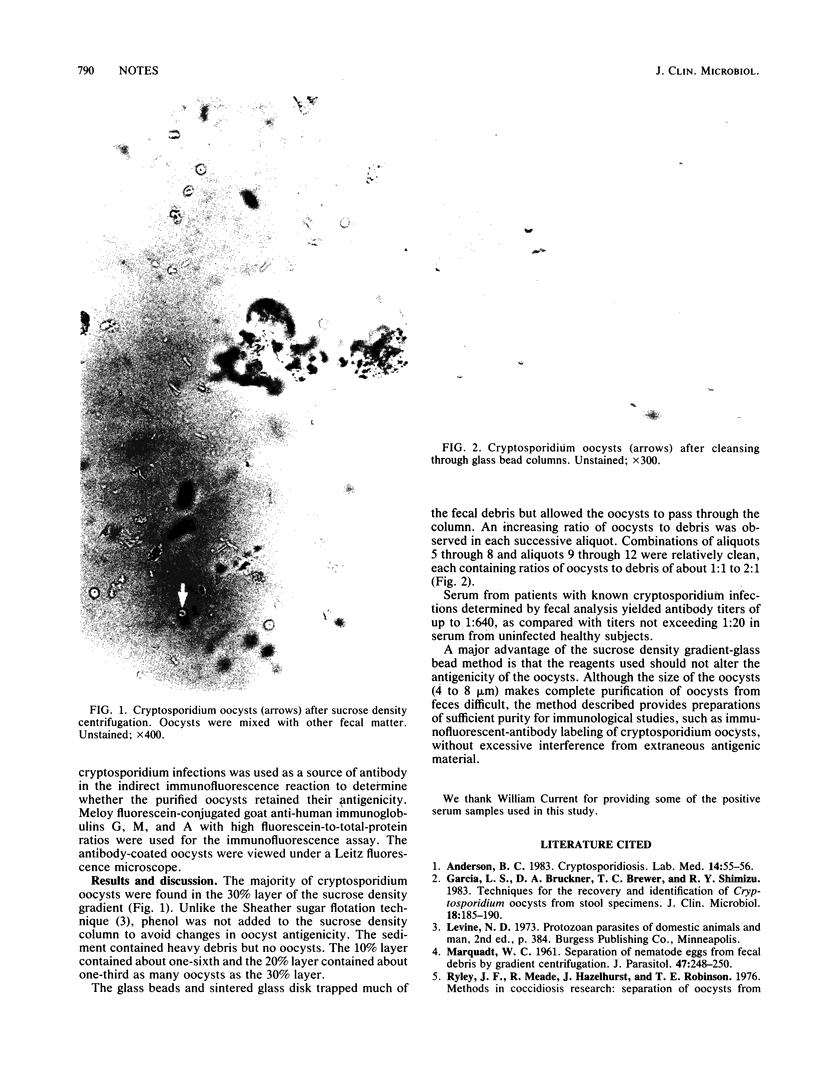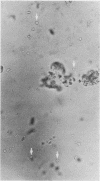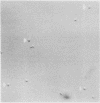Abstract
A method was developed to obtain purified cryptosporidium oocysts from fecal samples. Oocysts were initially collected by centrifugation through a sucrose density gradient and further purified by passage through glass bead columns. The purified oocysts were antigenically active and sufficiently pure for immunological studies.
Full text
PDF


Images in this article
Selected References
These references are in PubMed. This may not be the complete list of references from this article.
- Garcia L. S., Bruckner D. A., Brewer T. C., Shimizu R. Y. Techniques for the recovery and identification of Cryptosporidium oocysts from stool specimens. J Clin Microbiol. 1983 Jul;18(1):185–190. doi: 10.1128/jcm.18.1.185-190.1983. [DOI] [PMC free article] [PubMed] [Google Scholar]
- MARQUARDT W. C. Separation of nematode eggs from fecal debris by gradient centrifugation. J Parasitol. 1961 Apr;47:248–250. [PubMed] [Google Scholar]
- SHARMA N. N., REID W. M., FOSTER J. W. A cleaning method for coccidial oocysts using density-gradient sedimentation. J Parasitol. 1963 Feb;49:159–160. [PubMed] [Google Scholar]
- Sherwood D., Angus K. W., Snodgrass D. R., Tzipori S. Experimental cryptosporidiosis in laboratory mice. Infect Immun. 1982 Nov;38(2):471–475. doi: 10.1128/iai.38.2.471-475.1982. [DOI] [PMC free article] [PubMed] [Google Scholar]
- Upton S. J., Current W. L. The species of Cryptosporidium (Apicomplexa: Cryptosporidiidae) infecting mammals. J Parasitol. 1985 Oct;71(5):625–629. [PubMed] [Google Scholar]
- Wagenbach G. E. Purification of Eimeria tenella sporozoites with glass bead columns. J Parasitol. 1969 Aug;55(4):833–838. [PubMed] [Google Scholar]




